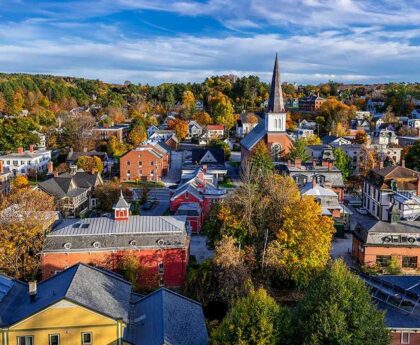Reims, France, boasts the best of European travel condensed into a single little city.
It’s the home of crowned kings, Christian faith, Gothic majesty and luminescent wine.
It’s also where a sad, weary world toasted the defeat of Adolf Hitler and his evil National Socialist German Workers Party in World War II.
The concentration of royal, religious, architectural, culinary and historical attractions makes Reims a bucket-list destination for many Americans.
“Reims is intoxicating,” Rick Steves, host of the PBS series “Rick Steves’ Europe,” says on his website.
It was in Reims that Gen. Dwight Eisenhower oversaw the final Allied advance into the heart of Germany in 1945.
And it’s where he accepted the surrender of the German High Command in the wee hours of a Wednesday morning in May.
Gen. Alfred Jodl signed on behalf of Germany.
He was executed for war crimes in 1946. Just a week earlier, Adolf Hitler died like a coward by suicide in his Berlin bunker.
“The mission of this Allied Force was fulfilled at 0241 (2:41 a.m.), local time, May 7th, 1945,” Eisenhower wrote dutifully in a telegram to Washington, D.C.
News broke the following day.
May 8 is recognized in the United States, and around the world, as V-E Day: Victory in Europe. The Museum of the Surrender, at 12 Rue Franklin Roosevelt, memorializes the event today and for every day.
Eisenhower’s terse message hid what certainly had to be “an immense amount of satisfaction,” Jim Ginther, supervisory archivist of the Eisenhower Presidential Library in Kansas, told Fox News Digital.
“He said in a speech shortly after the surrender that the sunshine of freedom is now shining again on the people of Europe.”
MEET THE AMERICAN WHO SAVED THE CHAMPAGNE INDUSTRY: MISSOURI SCIENTIST CHARLES VALENTINE RILEY
Ike was in the perfect place to celebrate the dawn of a new day.
Reims is the largest city in France’s world-famous wine-making region of Champagne.
Beneath its streets lies an immense treasure of sparkling wine. Billions worth of bubbly is aging in Reims right now in chalk and limestone caves, as it has been for centuries.
The underground climate provides the constant cool temperature and humidity to inspire perfectly effervescent wine.
The champagne appears to rest silently. Inside each bottle, however, is a frenzy of life and activity.
Yeasts consume sugar and convert it into alcohol — and into tiny bubbles.
The world’s most famous champagne houses offer guided tours of their subterranean citadels of sparklers: G.H. Mumm, Taittinger and Veuve Clicquot among them.
Tours are followed by tastings in lux lounges where champagne novices and enthusiasts alike clink and mingle.
Champagne owes much of its royal reputation to a monumental event in the history of European Christianity and French identity.
Clovis, the first king of the Franks, was baptized a Catholic in Reims in 496.
Reims Cathedral, a glorious masterpiece of Gothic architecture, is built over the site of the Clovis conversion.
A marker on the floor of the cathedral indicates the location.
Clovis inspired a later trend: Twenty-five kings of France were crowned in Reims Cathedral from the 13th to 19th centuries.
“Wine was said to flow freely at the coronation banquets,” reports the website of Comite Champagne, an industry trade group.
“This is how the region’s wine, initially still but which then became sparkling, came to be known as … the ‘wine of kings and the king of wines.’”
Champagne was uncorked as the wine of generals and victors on May 8, 1945.
Ginther says there’s no proof that Ike drank champagne that day in Reims to celebrate the Allied victory.
CLICK HERE TO SIGN UP FOR OUR LIFESTYLE NEWSLETTER
But at least one photo shows Eisenhower beaming at a celebratory table, bottles of bubbly in front of him.
World War II was not over. The fight to defeat Japan in the Pacific took three more months of horrific losses.
Ike had a lot on his mind.
“But there was obviously elation among Americans that the war was coming to an end,” said John Curatola, the Samuel Zemurray-Stone senior historian at the National World War II Museum in New Orleans.
“Americans learned that democracy is worth fighting for and that this fight requires great sacrifice among the citizens who are part of that democracy.”
For more Lifestyle articles, visit foxnews.com/lifestyle.
Article Source: Travel From Fox News Read More




